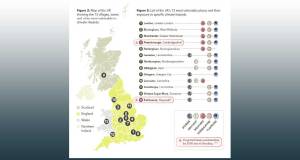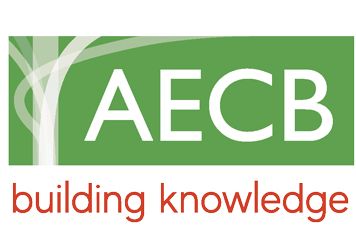- General
- Posted
Sustainable bodies criticise Future Homes lack of ambition
Three leading sustainable building organisations have expressed disappointment with the government’s proposed Future Homes Standard, which went to consultation in December, along with proposals for non-domestic buildings.
This article was originally published in issue 46 of Passive House Plus magazine. Want immediate access to all back issues and exclusive extra content? Click here to subscribe for as little as €15, or click here to receive the next issue free of charge
The Passivhaus Trust, UKGBC and AECB all criticised the lack of ambition in the proposals.
The proposed standard, which will be introduced for new homes in England, includes two options, both of which have identical fabric U-values and an air source heat pump. Option two features an airtightness AP50 of 5 m3/hr/m2 at 50 Pa and natural ventilation, while option one features a marginal airtightness uplift to 4m3/hr/m2 at 50 Pa, decentralised mechanical extract ventilation, a wastewater heat recovery system, and a solar PV array covering the equivalent of 40 per cent of the ground floor area.
By contrast, the news comes as the EU has just reached an agreement on the next recast of the Energy Performance of Buildings Directive – including zero emission requirements by 2030 for new buildings and 2050 for existing buildings, and a requirement to calculate the whole life carbon emissions of large new buildings from 2028 and all new buildings from 2030, and to set targets to limit whole life carbon emissions by 2030, and develop proposals for climate neutrality.
Commenting on the proposals, Passivhaus Trust CEO Jon Bootland said: “The Passivhaus Trust is disappointed with the proposals being put forward for the Future Homes Standard. We believe that what is being proposed is a missed opportunity to address fuel poverty and the climate crisis and will not deliver what we would consider to be a 'Future Home'.”
UKGBC deputy chief executive Simon McWhirter added: “This can’t genuinely be described as a ‘future’ standard. Having already shattered industry confidence with repeated green rollbacks, the government has opted for the least ambitious option that would deliver ‘future’ homes from 2025 at a lower standard than many homes already built today.”
AECB CEO Andrew Simmonds said: “This proposal illustrates how government and the loudest voices in the home building industry remain at odds with the need for housing to reliably reduce its energy demand to strategically align with the developing UK low carbon heat and power supply system. Both AECB and Passivhaus Trust members have for years been building to sensible AECB & passive house low energy, low carbon, high-performance new build standards. Why not simply adopt these?”
The AECB also raised concerns about the proposed approaches to ventilation and airtightness and pointed out that while relying on natural ventilation as per option two is a bad option, the proposal of decentralised mechanical extract ventilation in option one is “little better.”
Bootland criticised the lack of progress on current fabric standards, with only some very minor improvements to U-values based on the notional building compared to Part L 2021. “We believe that there should be an option three in the consultation which allows better building fabric performance, to improve occupant comfort, reduce energy bills, and reduce demand on the grid during winter,” he said.
“We would propose that the passive house standard should be considered as option three and should be accepted as “Deemed to Satisfy” the Future Homes Standard.”
While applauding the decision to include heat pump-based heating in both options in the consultation as “an important step towards decarbonising our domestic heating supply,” Bootland warned that it was only part of the picture. “On its own, this move will not reduce energy bills or improve occupant comfort,” he said. “Whilst the heat pump may deliver some of the efficiencies, electricity is still around three times the cost of gas. Option two in the proposals would still have hot water and heating costs of £1,220 per year. Is this really the best that we can expect of a 'Future Home'?”
Bootland said the trust is “not convinced” by the proposed approach to deal with the performance gap within the standard. “If new homes are not certain to achieve the expected levels of energy efficiency, and could require between 40 and 200 per cent more energy for heating than expected, then there could easily be examples of 'Future Homes' that are cold, costly to heat, and detrimental to the health of the inhabitants.”
The trust called on the UK government to follow Scotland’s lead and develop a passive house equivalent under building regulations. “This would ensure that homes are warm in winter, cool in summer, have fresh indoor air and low heating bills. Surely that is the minimum we should expect from a 'Future Home'?"
In January, the Passivhaus Trust will be releasing further modelling and analysis comparing the energy performance of the Future Homes standard contenders with the passive house standard.
Simon McWhirter noted the timing of the government announcement, at a sensitive stage in the COP 28 climate summit. “On the last day of the global climate negotiations when we’re in the last chance saloon to keep temperatures under 1.5 degrees, it’s unconscionable that the government is consulting on scrapping the expectation that new roofs should have solar panels, when this is already widely delivered through current regulations.
“While the Government is right, of course, to finally end the era of burning gas and oil in our new homes and buildings, fitting low carbon heating sources such as heat pumps is already commonplace, and the standard provides no improvement in energy efficiency.
“We’re disappointed that, despite such a long delay in producing this draft standard, the Government still hasn’t included measures to reduce the embodied carbon emissions from construction which accounts for around 1 in 10 tonnes of climate emissions in the UK. Nor has it moved to tackle flood risk or end the huge water waste from new builds that is driving shortages and so much ecological damage.”
To respond to the consultation on the proposed Future Homes and Buildings standards, which ends on 6 March, visit tinyurl.com/FutureHomesConsultation.
Related items
-
 September’s AECB environmental construction conference seeks to spark debate among industry experts
September’s AECB environmental construction conference seeks to spark debate among industry experts -
 Climate report warns overheating crisis threatens UK
Climate report warns overheating crisis threatens UK -
 Sustainable building leaders crowned at Exemplar Awards
Sustainable building leaders crowned at Exemplar Awards -
 Barratt launches record passive house scheme
Barratt launches record passive house scheme -
 Green homes and finance join forces for growth
Green homes and finance join forces for growth -
 Irish and British associations unite for conference as passive house explodes
Irish and British associations unite for conference as passive house explodes


